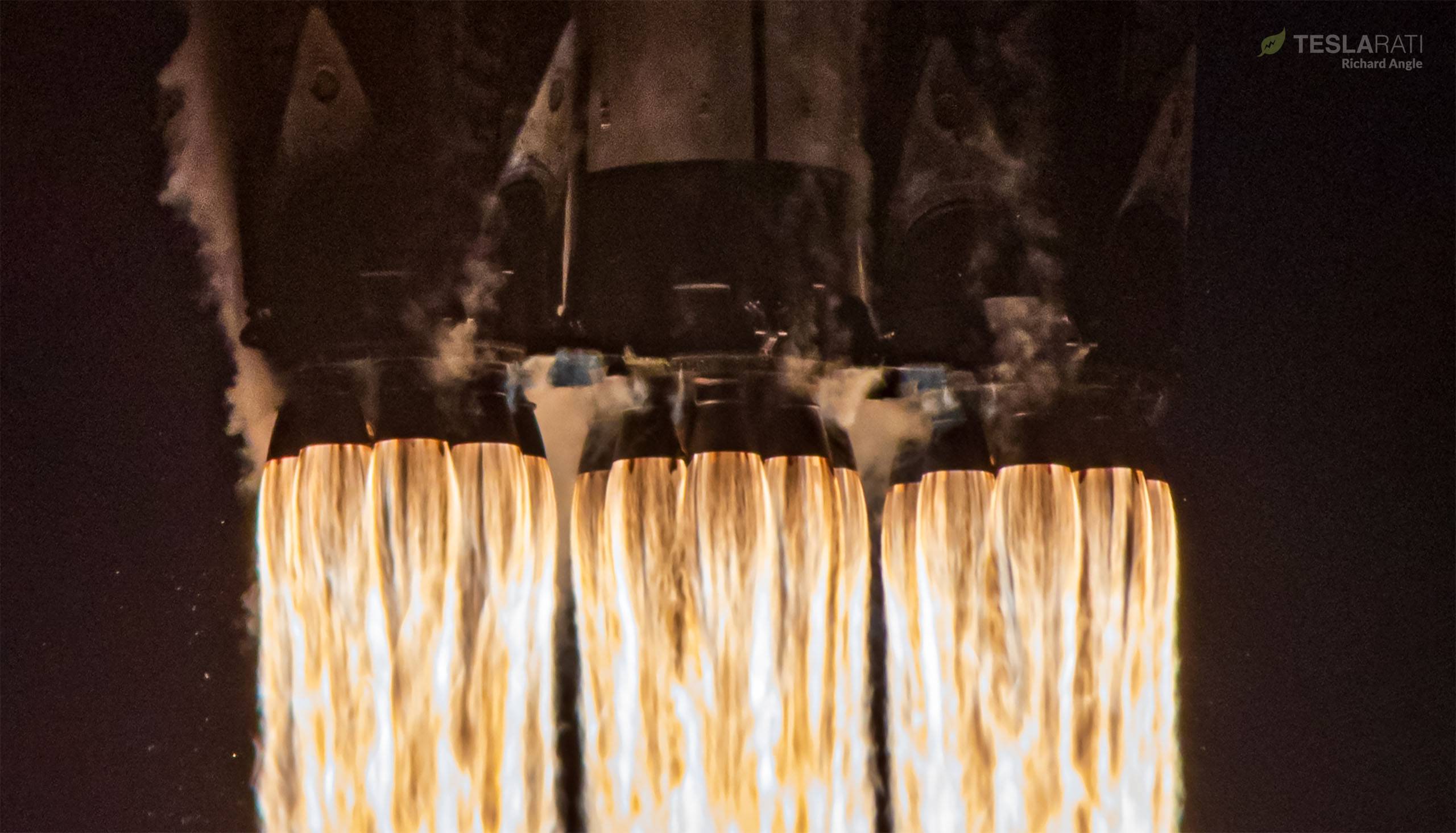

News
SpaceX’s spectacular USSF-67 Falcon Heavy launch in photos
On January 15th, SpaceX’s Falcon Heavy rocket lifted off for the second time in 75 days to launch another batch of US military payloads into orbits tens of thousands of kilometers above Earth’s surface.
Six and a half hours later, the US Space Systems Command (SSC) confirmed that Falcon Heavy had again completed the exceptionally difficult launch without issue. To deliver the USSF-67 mission’s payloads directly to geosynchronous orbit (GSO), the giant SpaceX rocket had to sacrifice one of its potentially reusable boosters and complete a complex six-hour ballet of rolls, burns, and spacecraft deployments. And for the second time in a row, Falcon Heavy did so without apparent issue.
In an SSC press release [PDF], Maj. Gen. Stephen Purdy, program executive officer for Assured Access to Space, said that the group “had another fantastic launch today on a Falcon Heavy.” He added that “while the launch itself was impressive,” he was “most proud of the fact that we placed important [national] capabilities into space.” And an impressive launch it certainly was.
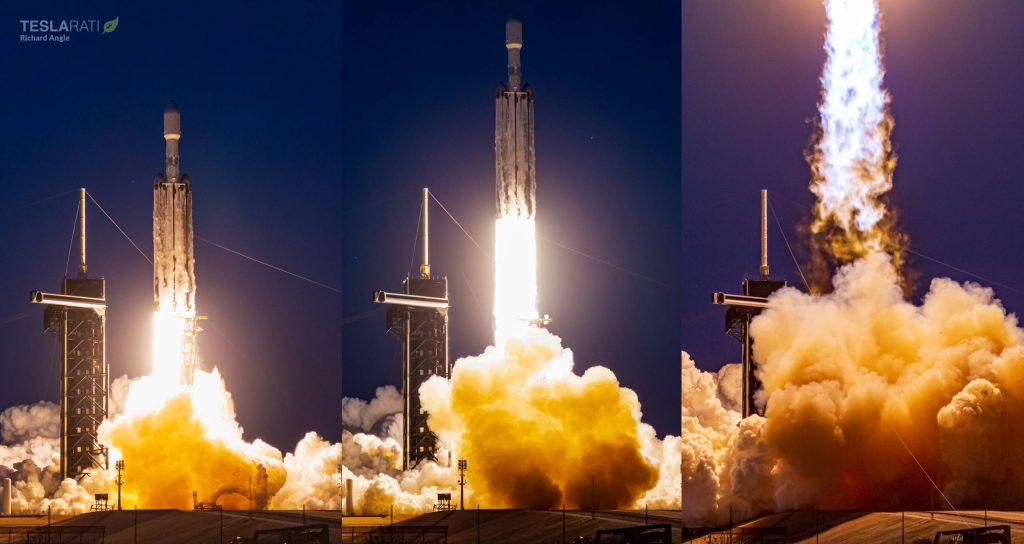
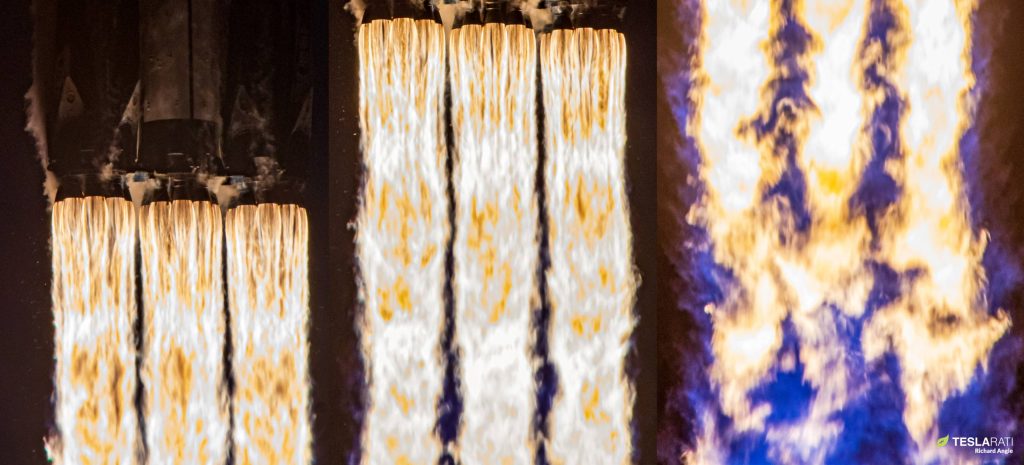
The update that's rolling out to the fleet makes full use of the front and rear steering travel to minimize turning circle. In this case a reduction of 1.6 feet just over the air— Wes (@wmorrill3) April 16, 2024
A Falcon (Heavy) spectacle
As previously discussed, USSF-67 was Falcon Heavy’s first twilight launch. The extraordinary cadence of SpaceX’s workhorse Falcon 9 rocket, which Falcon Heavy is derived from, caused twilight launches and the incredible light shows they can produce to become a fairly routine phenomena. But just under five years after its February 2018 debut, there had still never been a Falcon Heavy launch ‘jellyfish’ or ‘nebula.’ That thankfully changed on Sunday.
The rocket lifted off just ten or so minutes after sunset and soared into the fading purple skies. Those skies were still relatively bright at ground-level, reducing the amount of contrast, but the resulting light show was still spectacular as Falcon Heavy and its immense exhaust plume ascended back into the sunlight. The artificial sunrise lit up that pillar-like plume with the colors of sunrise and, eventually, bright daylight.
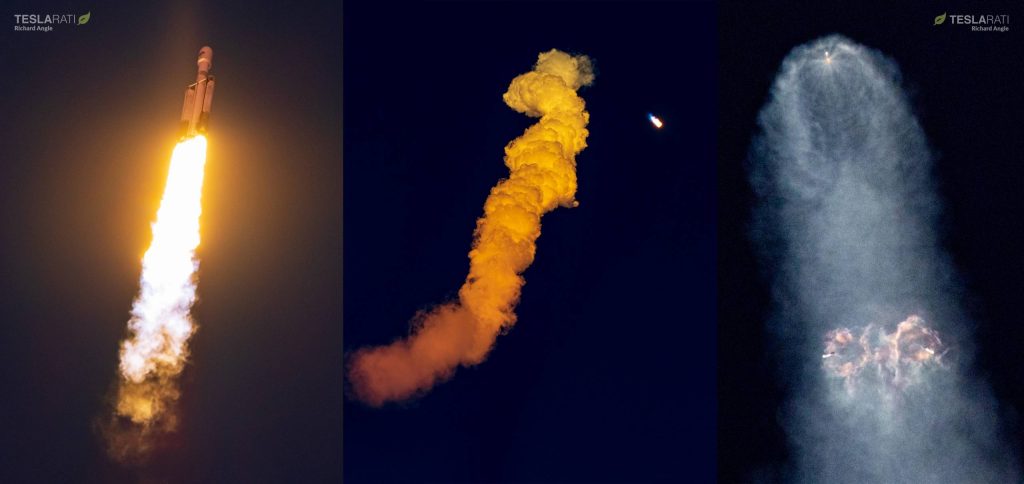
Close-up views enabled by tracking telescopes captured the true drama, which began shortly after Falcon Heavy’s twin side boosters separated from the rocket’s main core stage and upper stage, flipped around, and ignited their engines to fly back to the Florida coast they’d only just lifted off from. As the nine-engine center core continued towards space, each booster fired up one and then three Merlin 1D engines for their boostback burns.
A view from Astronomy Live captured the moment of boostback burn ignition, during which the side boosters visibly blasted ‘craters’ the Falcon Heavy center core’s much more powerful plume. As those plumes interacted, the fluid dynamics and light produced by multiple Merlin 1D engines combined to create chaotic whisps of orange, red, and yellow – akin to an exploding nebula. The moments prior were also spectacular as the two side boosters, lit up by direct sunlight against the nearly black sky, began gently floating away from the center core and spinning around with bursts from several nitrogen gas thrusters – a brief moment of serenity before the violence of engine ignition.
On a chariot of fire
But as Maj. Gen. Purdy noted, the purpose of USSF-67 – spectacle aside – was to carry a number of important payloads into orbit.
“After both side boosters touched down, SpaceX ended its live coverage at the request of the Space Force, reiterating the mission’s secretive customer and nature. The USSF hasn’t confirmed much about the USSF-67 mission’s payloads, but Falcon Heavy is known to be carrying a geostationary communications relay satellite called CBAS-2 and likely built by Boeing. CBAS-2 is joined by Northrop Grumman’s third Long Duration Propulsive EELV or LDPE-3A, a combination of a propulsive kick stage and a satellite. LDPE-3A is carrying a collection of rideshare satellites and payloads and is designed to operate for months in orbit. Using USSF-44 as a guide, the total USSF-67 payload could weigh roughly 3.75 to 4.75 tons (8,250-10,500 lb).”
Teslarati.com – January 15th, 2023
The same SSC press release provides more detail, noting that LDPE-3A carries two hosted payloads – Catcher and WASSAT. Catcher is a space weather instrument developed by the Aerospace Corporation, while WASSAT is a prototype [PDF] of a wide-angle observation instrument designed to track other satellites in GSO. LDPE is also hosting “three payloads developed by the Space Rapid Capabilities Office (SRCO),” including “two operational prototypes for enhanced situational awareness, and an operational prototype crypto/interface encryption payload providing secure space-to-ground communications capability.”
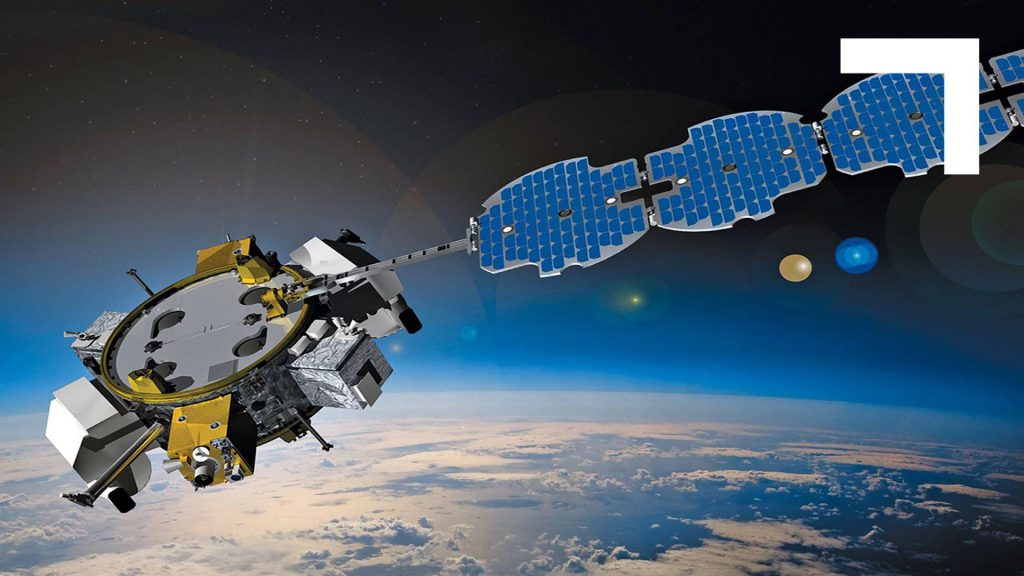
Two down, one to go
For Falcon Heavy side boosters B1064 and B1065, both of which supported USSF-44 and USSF-67, their missions are far from over. Their second successful side-by-side landing has cleared the boosters to be reused on a third US military launch called USSF-52. Originally known as AFSPC-52, the mission was Falcon Heavy’s first operational US military launch contract and the first time the rocket beat competitor United Launch Alliance (ULA) during a competitive procurement.
Next Spaceflight reports that USSF-52 is scheduled to launch no earlier than April 10th, 2023, less than three months from now. Once that mission is complete, Falcon Heavy will have no more US military missions on contract, although more will almost certainly be rewarded sooner than later. USSF-52 is sandwiched between two other Falcon Heavy launches. Next Spaceflight also reports that Falcon Heavy could launch the ViaSat-3 communications satellite as early as March 2023 and the Jupiter-3 (EchoStar 24) communications satellite as early as May 2023, making for a busy 90 days.
For that trio to happen as scheduled, SpaceX will have to beat Falcon Heavy’s record 75-day turnaround, which has coincidentally (?) occurred twice: first between Arabsat 6A and STP-2, and again between USSF-44 and USSF-67. Including USSF-67, SpaceX has up to five Falcon Heavy launches scheduled this year.
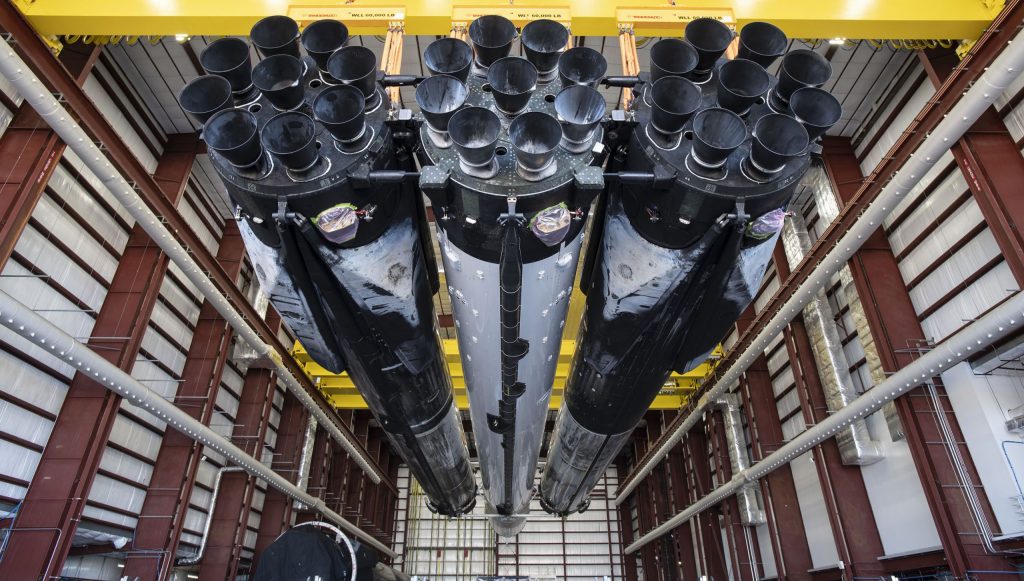
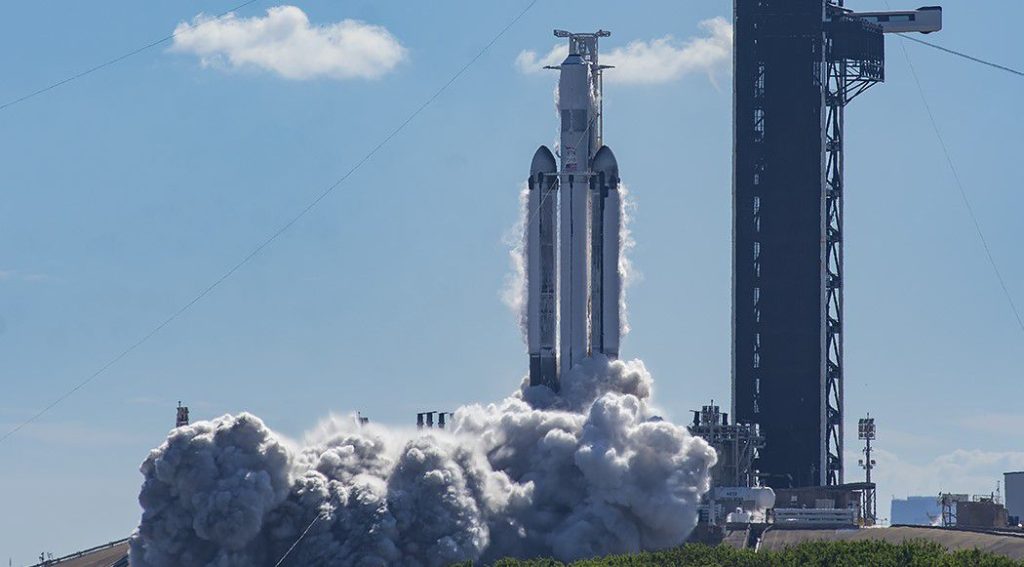
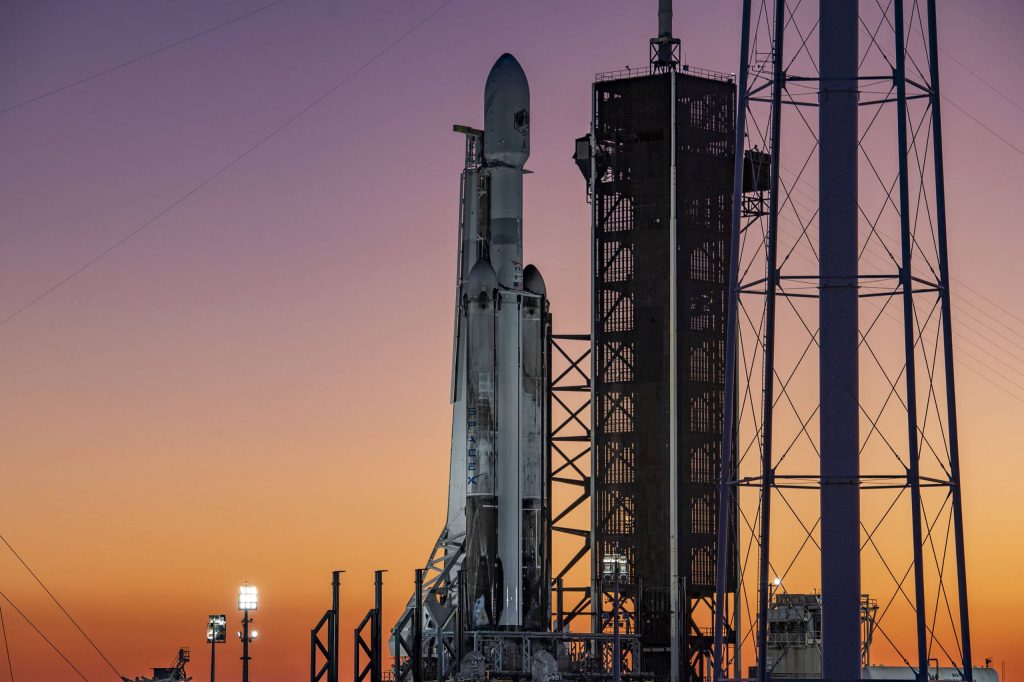
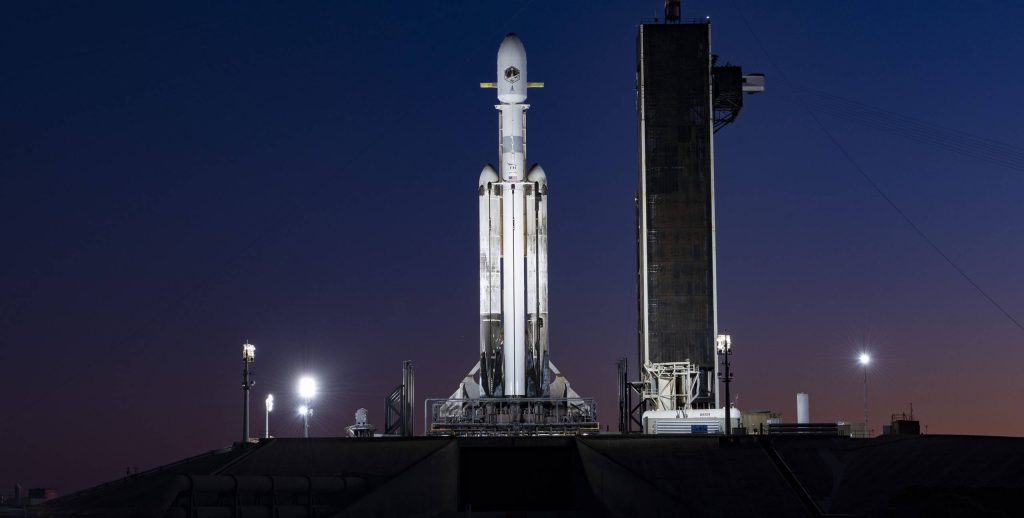
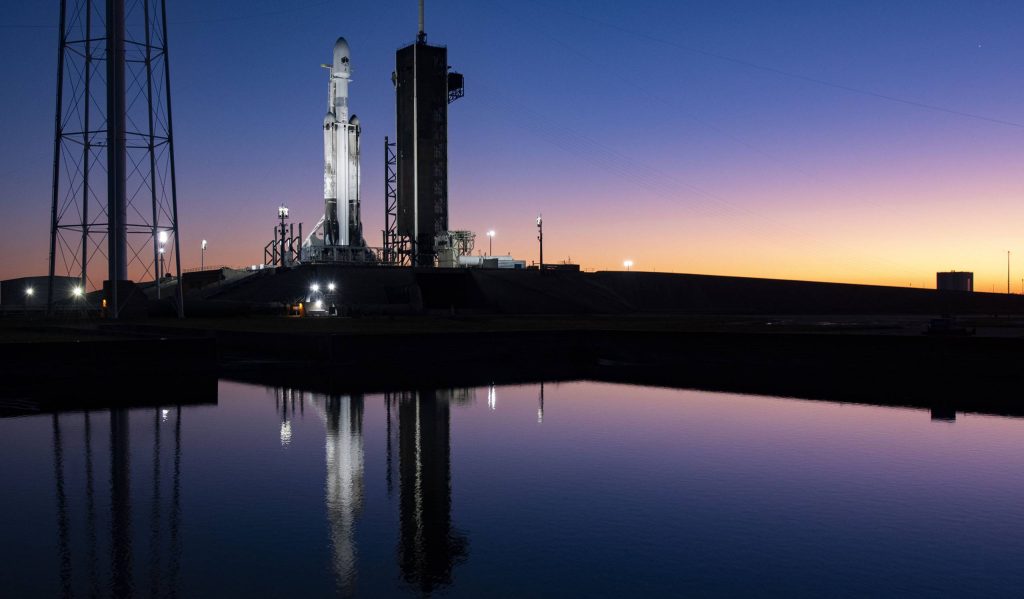
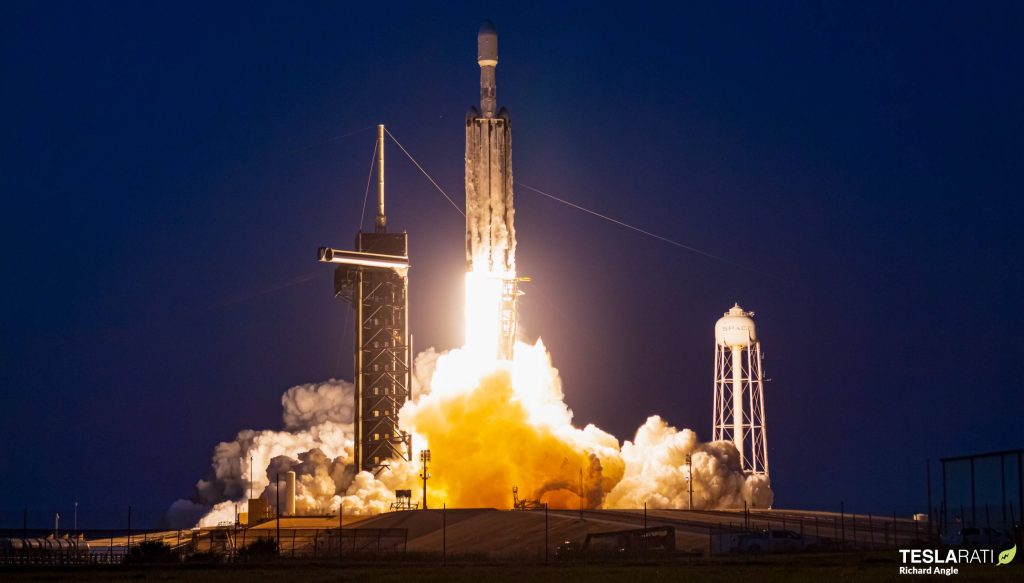
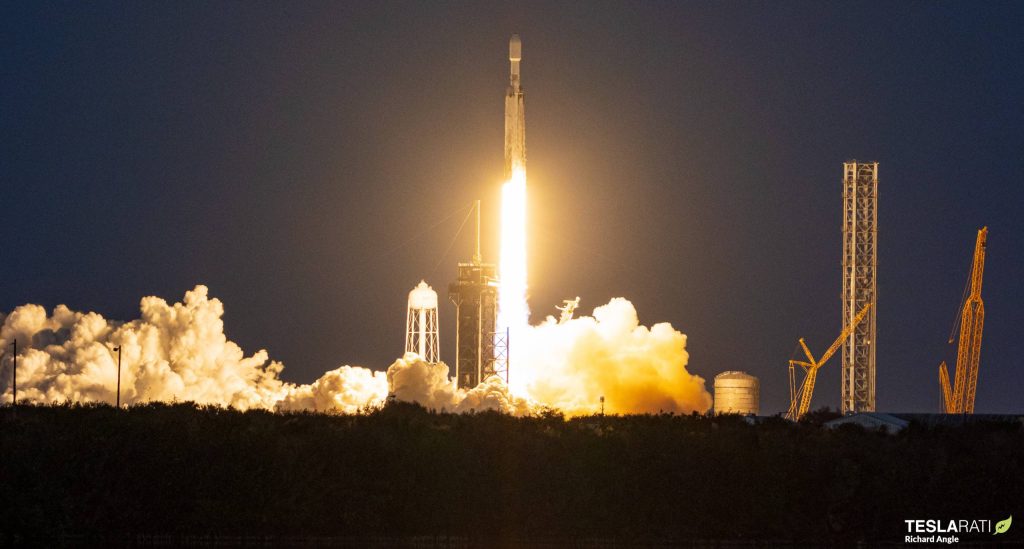
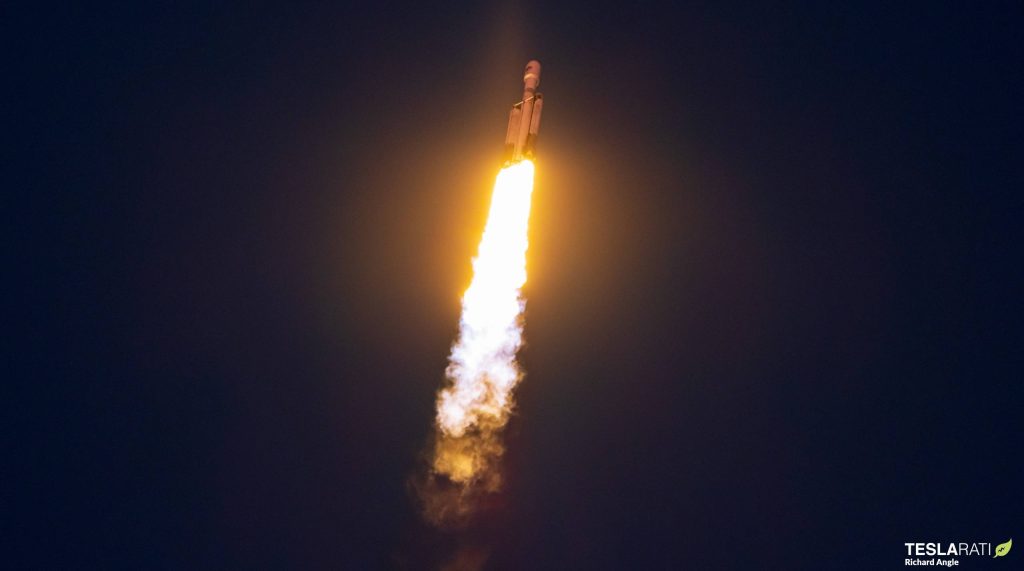
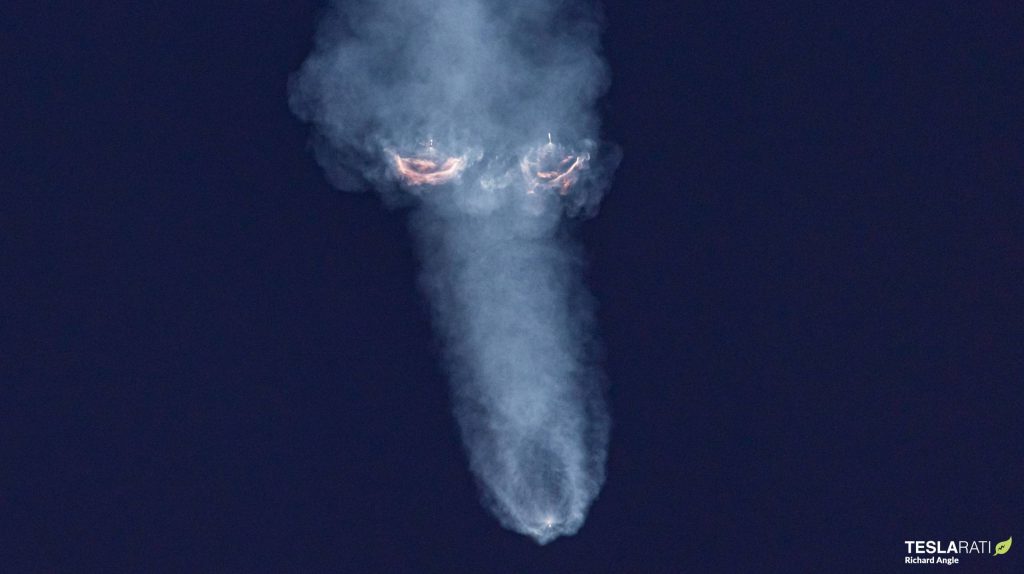



News
Tesla begins Robotaxi certification push in Arizona: report
Tesla seems serious about expanding its Robotaxi service to several states in the coming months.

Tesla has initiated discussions with Arizona transportation regulators to certify its driverless Robotaxi service in the state, as per a recent report from Bloomberg News. The move follows Tesla’s launch of its Robotaxi pilot program in Austin, Texas, as well as CEO Elon Musk’s recent comments about the service’s expansion in the Bay Area.
The Arizona Department of Transportation confirmed to Bloomberg that Tesla has reached out to begin the certification process for autonomous ride-sharing operations in the state. While details remain limited, the outreach suggests that Tesla is serious about expanding its driverless Robotaxi service to several territories in the coming months.
The Arizona development comes as Tesla prepares to expand its service area in Austin this weekend, as per CEO Elon Musk in a post on X. Musk also stated that Tesla is targeting the San Francisco Bay Area as its next major market, with a potential launch “in a month or two,” pending regulatory approvals.
Tesla first launched its autonomous ride-hailing program on June 22 in Austin with a small fleet of Model Y vehicles, accompanied by a Tesla employee in the passenger seat to monitor safety. While still classified as a test, Musk has said the program will expand to about 1,000 vehicles in the coming months. Tesla will later upgrade its Robotaxi fleet with the Cyercab, a two-seater that is designed without a steering wheel.
Sightings of Cybercab castings around the Giga Texas complex suggests that Tesla may be ramping the initial trial production of the self-driving two-seater. Tesla, for its part, has noted in the past that volume production of the Cybercab is expected to start sometime next year.
In California, Tesla has already applied for a transportation charter-party carrier permit from the state’s Public Utilities Commission. The company is reportedly taking a phased approach to operating in California, with the Robotaxi service starting with pre-arranged rides for employees in vehicles with safety drivers.
News
Tesla sets November 6 date for 2025 Annual Shareholder Meeting
The automaker announced the date on Thursday in a Form 8-K.

Tesla has scheduled its 2025 annual shareholder meeting for November 6, addressing investor concerns that the company was nearing a legal deadline to hold the event.
The automaker announced the date on Thursday in a Form 8-K submitted to the United States Securities and Exchange Commission (SEC). The company also listed a new proposal submission deadline of July 31 for items to be included in the proxy statement.
Tesla’s announcement followed calls from a group of 27 shareholders, including the leaders of large public pension funds, which urged Tesla’s board to formally set the meeting date, as noted in a report from The Wall Street Journal.
The group noted that under Texas law, where Tesla is now incorporated, companies must hold annual meetings within 13 months of the last one if requested by shareholders. Tesla’s previous annual shareholder meeting was held on June 13, 2024, which placed the July 13 deadline in focus.
Tesla originally stated in its 2024 annual report that it would file its proxy statement by the end of April. However, an amended filing on April 30 indicated that the Board of Directors had not yet finalized a meeting date, at least at the time.
The April filing also confirmed that Tesla’s board had formed a special committee to evaluate certain matters related to CEO Elon Musk’s compensation plan. Musk’s CEO performance award remains at the center of a lengthy legal dispute in Delaware, Tesla’s former state of incorporation.
Due to the aftermath of Musk’s legal dispute about his compensation plan in Delaware, he has not been paid for his work at Tesla for several years. Musk, for his part, has noted that he is more concerned about his voting stake in Tesla than his actual salary.
At last year’s annual meeting, TSLA shareholders voted to reapprove Elon Musk’s compensation plan and ratified Tesla’s decision to relocate its legal domicile from Delaware to Texas.
Elon Musk
Grok coming to Tesla vehicles next week “at the latest:” Elon Musk
Grok’s rollout to Tesla vehicles is expected to begin next week at the latest.

Elon Musk announced on Thursday that Grok, the large language model developed by his startup xAI, will soon be available in Tesla vehicles. Grok’s rollout to Tesla vehicles is expected to begin next week at the latest, further deepening the ties between the two Elon Musk-led companies.
Tesla–xAI synergy
Musk confirmed the news on X shortly after livestreaming the release of Grok 4, xAI’s latest large language model. “Grok is coming to Tesla vehicles very soon. Next week at the latest,” Musk wrote in a post on social media platform X.
During the livestream, Musk and several members of the xAI team highlighted several upgrades to Grok 4’s voice capabilities and performance metrics, positioning the LLM as competitive with top-tier models from OpenAI and Google.
The in-vehicle integration of Grok marks a new chapter in Tesla’s AI development. While Tesla has long relied on in-house systems for autonomous driving and energy optimization, Grok’s integration would introduce conversational AI directly into its vehicles’ user experience. This integration could potentially improve customer interaction inside Tesla vehicles.
xAI and Tesla’s collaborative footprint
Grok’s upcoming rollout to Tesla vehicles adds to a growing business relationship between Tesla and xAI. Earlier this year, Tesla disclosed that it generated $198.3 million in revenue from commercial, consulting, and support agreements with xAI, as noted in a report from Bloomberg News. A large portion of that amount, however, came from the sale of Megapack energy storage systems to the artificial intelligence startup.
In July 2023, Musk polled X users about whether Tesla should invest $5 billion in xAI. While no formal investment has been made so far, 68% of poll participants voted yes, and Musk has since stated that the idea would be discussed with Tesla’s board.
-

 Elon Musk1 week ago
Elon Musk1 week agoTesla investors will be shocked by Jim Cramer’s latest assessment
-

 Elon Musk3 days ago
Elon Musk3 days agoElon Musk confirms Grok 4 launch on July 9 with livestream event
-

 Elon Musk14 hours ago
Elon Musk14 hours agoxAI launches Grok 4 with new $300/month SuperGrok Heavy subscription
-

 News7 days ago
News7 days agoTesla Model 3 ranks as the safest new car in Europe for 2025, per Euro NCAP tests
-

 Elon Musk2 weeks ago
Elon Musk2 weeks agoA Tesla just delivered itself to a customer autonomously, Elon Musk confirms
-

 Elon Musk1 week ago
Elon Musk1 week agoxAI’s Memphis data center receives air permit despite community criticism
-

 Elon Musk2 weeks ago
Elon Musk2 weeks agoTesla’s Omead Afshar, known as Elon Musk’s right-hand man, leaves company: reports
-

 News2 weeks ago
News2 weeks agoXiaomi CEO congratulates Tesla on first FSD delivery: “We have to continue learning!”



















